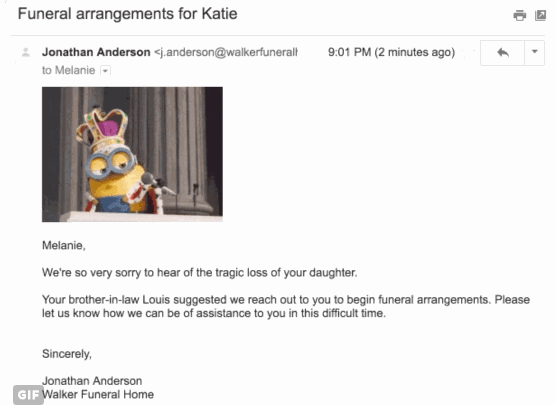Don't mess with my email
One thing we tell clients is that people consider their mailbox a very personal space. They’re offended when people invade that personal space without permission, sometimes to an extent that doesn’t seem proportional to the scale of the offense. And we advise senders who have been invited into the inbox to treat it with respect.
Google don’t seem to realize that.
Today, they replaced one of the two “Send Mail” buttons (and the associated key sequence that people have in their finger memory) with one that silently attached a Minions mic-drop gif to the mail, and then hid any future replies to that mail thread. Quite apart from the fact that people use their gmail accounts for professional communications, this is also sabotaging what many people consider their most personal online space. (And, to make it worse, they had a bug such that sometimes the gif would also be added to mail using the other “Send Mail” button).
There’s No Way This Could Go Horribly Wrong.
People were very, very unamused. Google had already pulled the feature by the time I heard about it this morning.
Never take peoples’ mailboxes for granted. Never.
